Fish farming, also known as aquaculture, involves raising fish in controlled environments for commercial purposes. It’s a sustainable way to produce high-quality seafood while contributing to economic growth. With the global population constantly growing, producing more fish can help meet the increasing demand for protein-rich food. It also promotes sustainability by reducing pressure on wild fish populations and ecosystems.
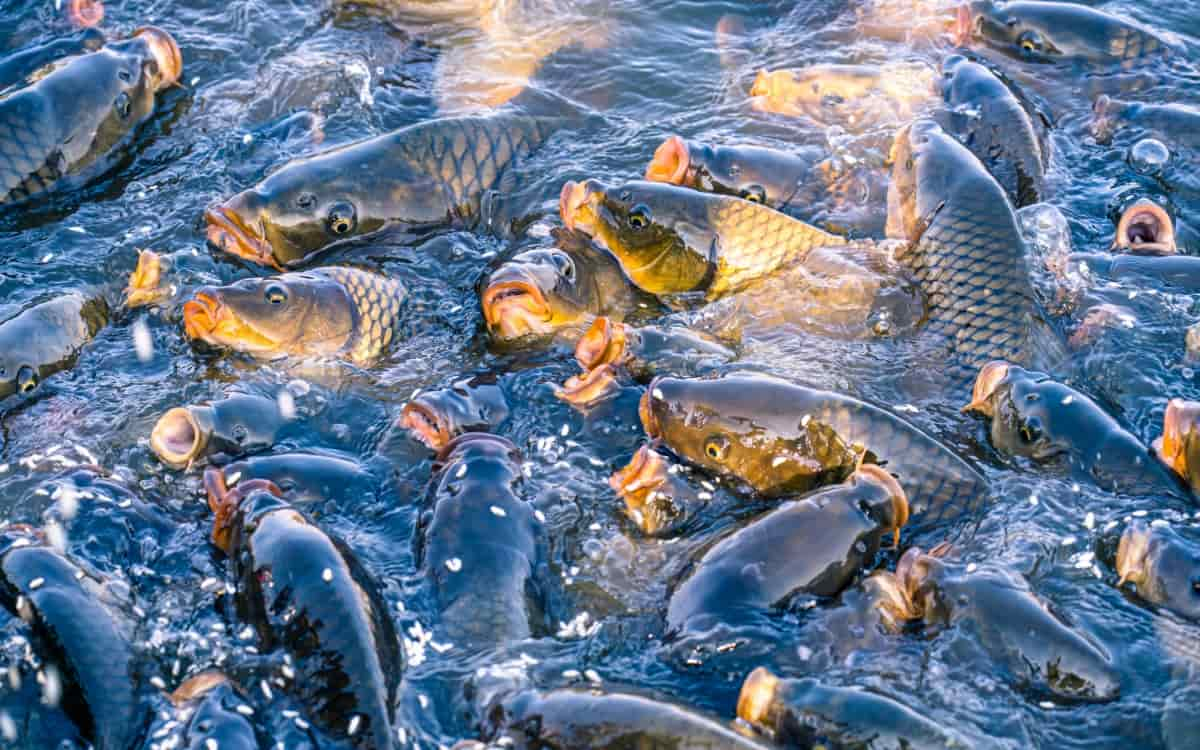
Fish Farming for Beginners
Do Your Homework for Planning
Start by familiarizing yourself with different fish species suitable for aquaculture. Consider factors like water temperature, oxygen levels, and feeding habits that best suit your chosen fish. Next, study market trends and demand in your area. Understanding consumer preferences will help you decide which type of fish to farm for maximum profitability.
Create a detailed business plan outlining your goals, budget, marketing strategies, and production processes. This roadmap will guide you through each stage of setting up and running a successful fish farming operation.
Pick the Perfect Spot
The perfect location can significantly affect the success of your aquaculture business. Look for a site with access to clean water sources and good water quality. Make sure there are no pollutants or industrial activities nearby that could harm your fish. When selecting a location for your fish farm, consider factors like temperature, sunlight exposure, and natural shelter.
Optimal environmental conditions can promote healthy growth and reduce stress among the fish. Accessibility to transportation networks is also important for easy distribution of your harvested fish to markets or buyers. Choose a spot that is convenient for both you and potential customers.
Choose Your Fish Wisely
Conduct thorough research on different types of fish that can thrive in your chosen location’s water conditions. Some species grow faster than others, allowing for quicker turnover and potential profits. Additionally, take into account the feeding habits and diet requirements of each type of fish – some may be more cost-effective to feed than others. Select fish species that can be raised sustainably with minimal environmental impact.
In case you missed it: The Eco-Friendly Makeover: How to Convert Your Unused Swimming Pool into a Fish Pond
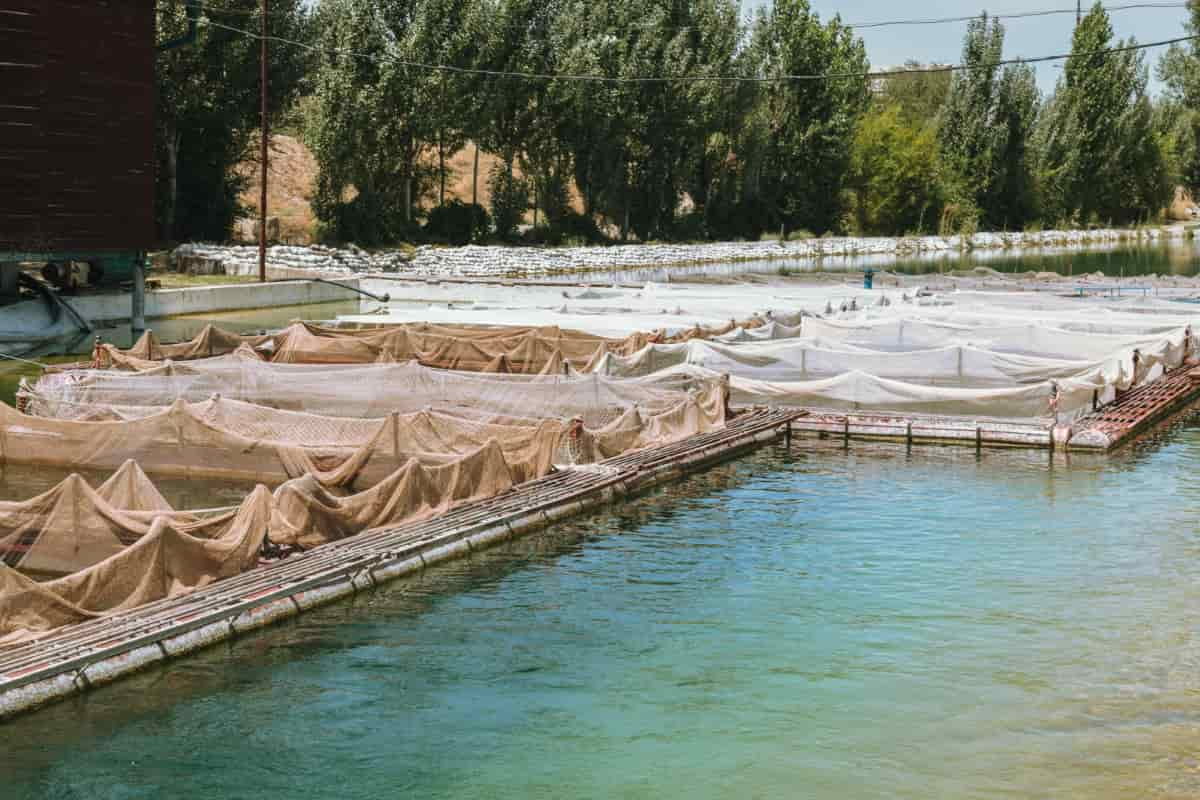
Avoid species that are overexploited or listed as endangered or threatened. Choose fish species that are well-suited to aquaculture conditions, taking into account factors such as water temperature, pH levels, oxygen requirements, and feeding habits. Tilapia, catfish, salmon, trout, and shrimp are popular choices for aquaculture due to their adaptability and growth potential.
Moreover, consider the environmental impact of farming a specific type of fish. Opt for sustainable options that have minimal negative effects on the ecosystem. Balance profitability with sustainability when deciding which fish to raise in your aquaculture venture.
Know the Legal Requirements
Before starting an aquaculture business, you’ll likely need to obtain permits and licenses from regulatory authorities. These may include permits for water use, land use, environmental impact assessments, and aquaculture operations. Check with local government agencies or fisheries departments to ensure compliance with all legal requirements. Familiarize yourself with the legal requirements involved.
Each region may have specific regulations and permits you need to adhere to ensure your farm operates smoothly and within the law. Aquaculture operations must comply with environmental regulations to minimize impacts on water quality, ecosystems, and biodiversity. This may involve implementing measures to prevent pollution, manage waste, and protect sensitive habitats.
Researching and understanding these legalities will not only help you avoid potential fines or shutdowns but also demonstrate your commitment to running a legitimate and responsible operation. Knowing the legal landscape is essential for a successful fish farming venture, from obtaining necessary licenses to complying with environmental standards. Consulting with local authorities or seeking guidance from experienced fish farmers can provide valuable insights into what is required in terms of permits, zoning restrictions, water usage rights, and other relevant regulations.
Design Your Farm Smartly
Consider the layout of your enclosures, ensuring adequate space and proper water circulation for the optimal growth of your fish. Think about accessibility too; easy access will make daily operations smoother and more efficient. Additionally, plan for potential expansion in the future by leaving room for growth.
In case you missed it: Sustainable Biofloc Fish Farming: A Comprehensive Guide to Eco-Friendly Practices
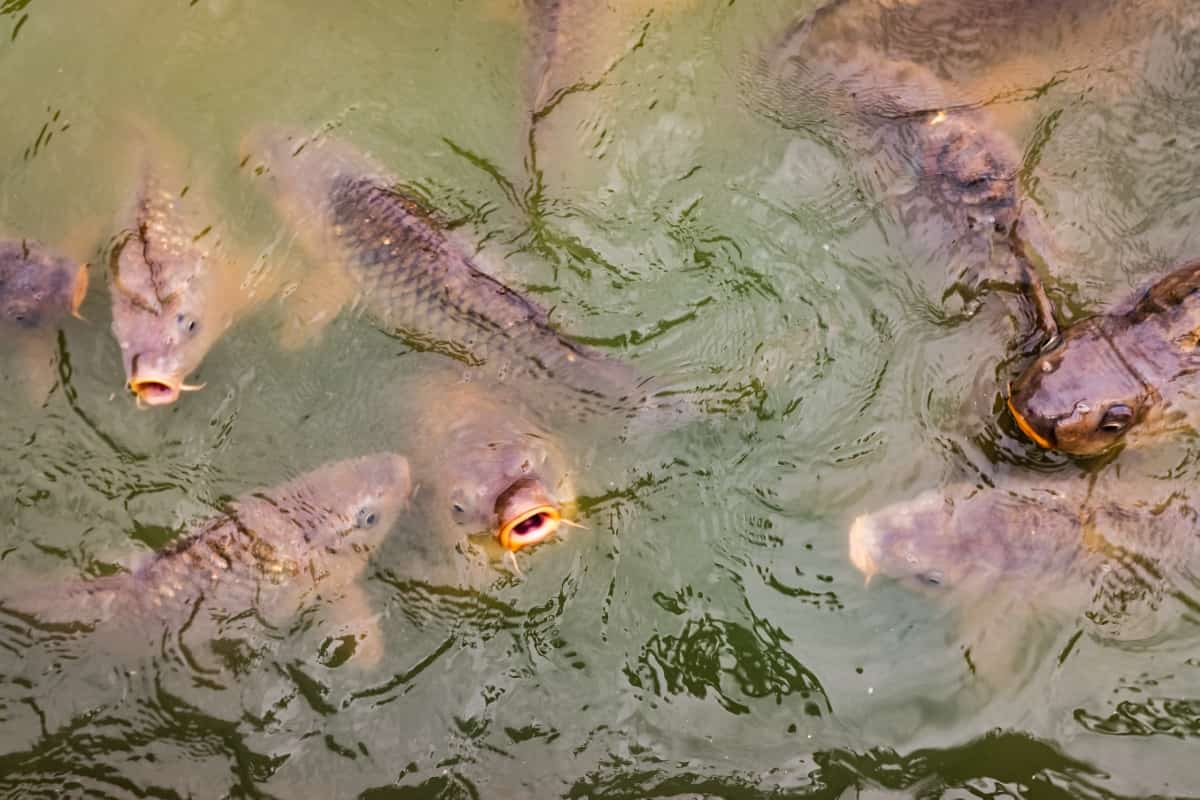
Utilize technology to monitor water quality and automate feeding systems where possible. This can help streamline processes and ensure the health of your fish. Consider sustainability in your design by implementing eco-friendly practices, such as water conservation techniques. Remember, a well-designed farm benefits your fish and contributes to the profitability of your aquaculture business.
Water is Key
Fish need clean and well-oxygenated water to thrive and grow successfully. Ensuring the right quality of water is essential for their health and productivity. Regular water parameter testing, such as pH levels, temperature, oxygen content, and ammonia levels, is crucial in maintaining a suitable environment for your fish. Understanding these factors will help you make necessary adjustments to ensure optimal conditions.
Investing in a reliable filtration system can help maintain water quality. Additionally, monitoring the flow of water within your enclosures is important to prevent stagnation or low oxygen levels. Remember that different fish species have specific requirements for water quality and temperature. It’s vital to research each type of fish you plan on farming to provide them with an environment where they can thrive.
Get the Right Equipment
Invest in quality tanks or ponds that are suitable for the type of fish you plan to raise. Please make sure they are durable and easy to clean. Aeration systems are essential to ensure your fish have enough oxygen in the water. Consider installing pumps or aerators to maintain proper oxygen levels. Temperature control equipment is vital, especially if you live in an area with extreme weather conditions.
Heating or cooling devices can help regulate water temperature for optimal growth. Install heaters to maintain water temperature within the optimal range for your fish species, especially in colder climates. In warmer climates, consider cooling systems such as chillers or evaporative coolers to prevent overheating. Don’t forget about feeding equipment such as automatic feeders to ensure your fish receive proper nutrition consistently.
In case you missed it: 14 Biofloc Fish Farming Tank Suppliers in India: Top Aqua Products Manufacturers
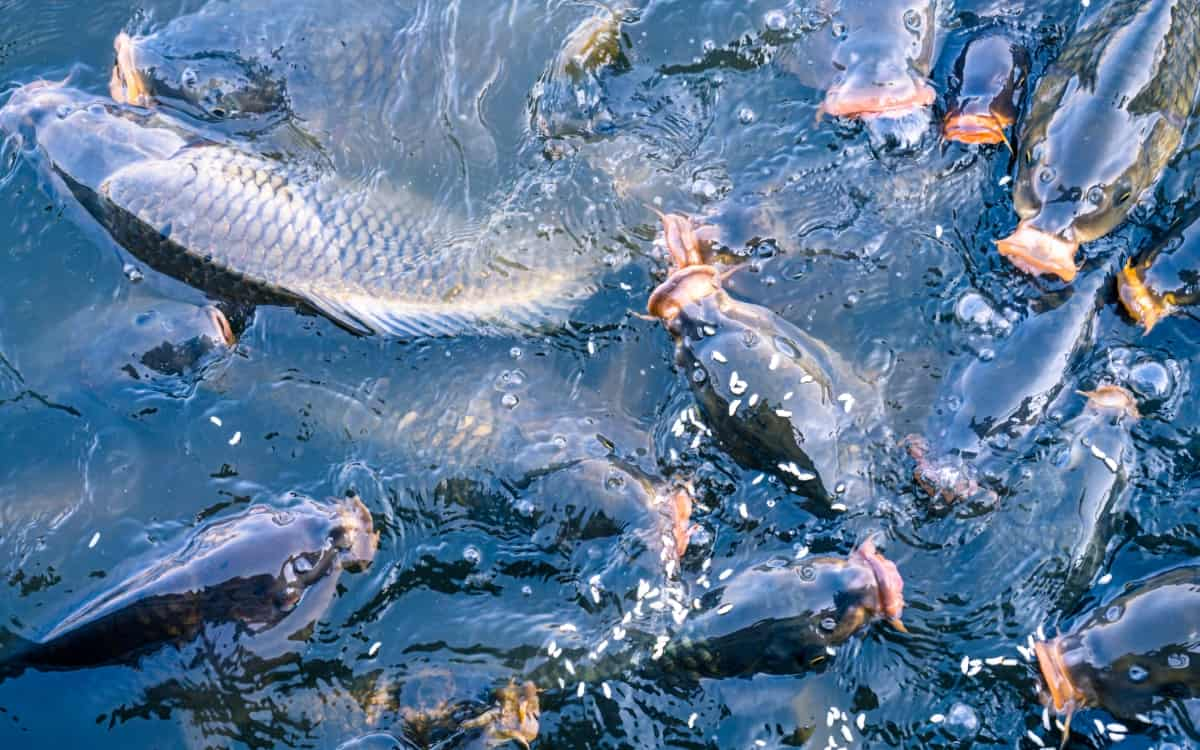
Additionally, having nets, grading tools, and other handling equipment will make managing your fish farm easier and more efficient. Provide safety equipment such as life jackets, first aid kits, and emergency signage for workers. If transporting fish to market or other facilities, use transport tanks or containers equipped with oxygenation systems to ensure fish survival during transit.
Find Healthy Fish
Start by sourcing your fish from reputable suppliers who prioritize quality and health. Look for signs of good health in the fish, such as clear eyes, intact fins, and active swimming behavior. When selecting your fish, consider their specific needs regarding water temperature, pH levels, and tank size to ensure they thrive in their new environment.
Quarantine new arrivals to prevent diseases among your existing stock. Observe your fish’s behavior and appearance regularly to monitor their health. If you notice any unusual behaviors, seek advice from a vet or experienced aquaculturist. Providing a clean and well-maintained habitat will also help keep your fish healthy and disease-free.
Feed Them Well
Feeding your fish well is crucial for their growth and overall health. Different species have different dietary needs, so it’s essential to research what will work best for the type of fish you are farming. Providing a good diet rich in proteins, vitamins, and minerals will help them thrive. Pelleted or extruded feed is commonly used in fish farming as the fish receives all the necessary nutrients.
It’s important to monitor how much food you give them to prevent overfeeding, which can be affected by water pollution and health issues for the fish. Consider consulting with a nutritionist specialized in aquaculture to create a feeding plan tailored to your specific farm and fish species. By providing high-quality feed at regular intervals, you’ll support optimal growth rates and reduce the risk of diseases within your population.
Keep Them Healthy
Keeping your fish healthy is crucial for the success of your aquaculture business. The key aspect of maintaining their health is monitoring water quality regularly. Make sure the water is clean and well-oxygenated to prevent diseases and stress among your fish. Another important factor in ensuring their well-being is providing them with a balanced diet. Proper nutrition will help boost their immune system and overall health.
Regularly inspecting your fish for any signs of illness or abnormal behavior can also help you address any issues promptly. In case you notice any problems, consult with a veterinarian to provide proper treatment. Implementing good biosecurity measures on your farm can also prevent diseases from spreading among your fish population. To minimize risks, quarantine new arrivals, control access to ponds, and maintain strict hygiene practices.
Safety First
By applying safety measures on your fish farm, you not only protect yourself but also create a secure working environment. Invest in high-quality safety gear such as gloves, boots, and life jackets. Proper clothing can protect you from injuries while working on your farm. Regularly inspect all equipment for signs of wear or damage.
In case you missed it: Key Rules to Start Fish Farming in Denmark: Business Plan, Breeds, Setup Cost, and Profit
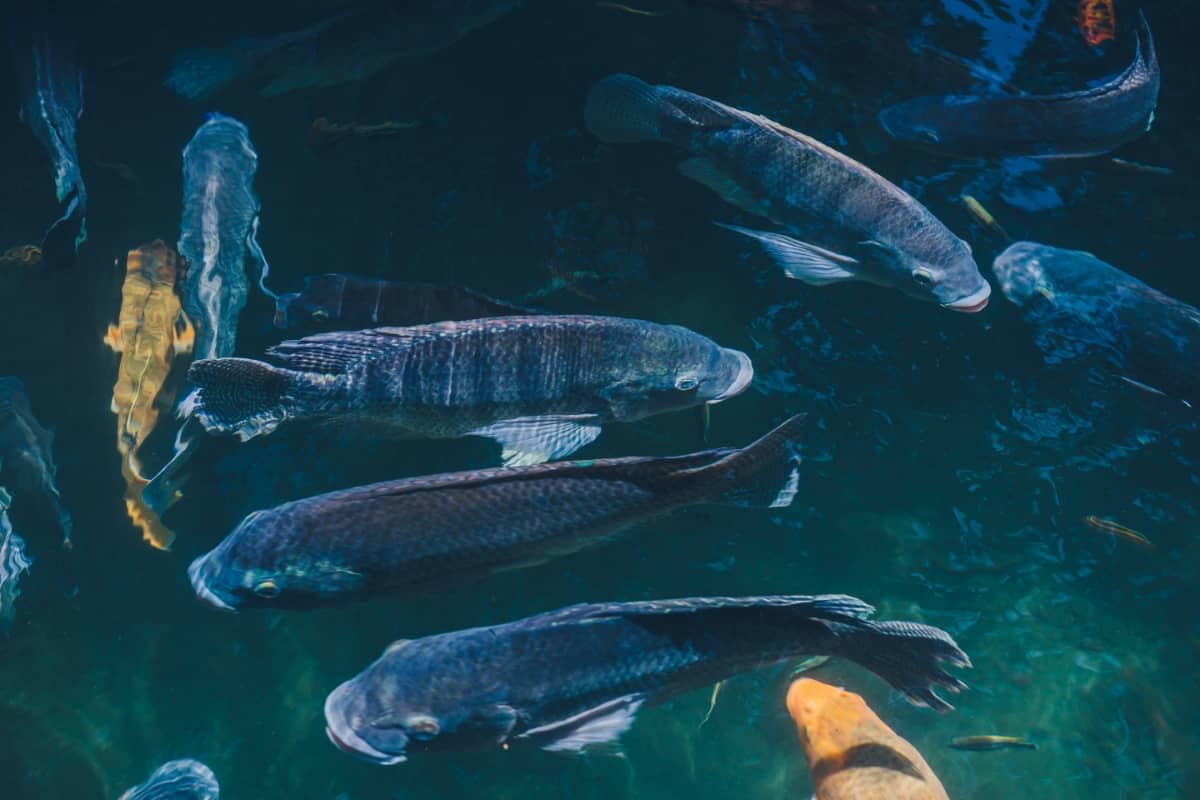
Malfunctioning tools or machinery can lead to dangerous situations, so maintenance is key to keeping everything running smoothly. Establish clear safety protocols for yourself and anyone else involved in operating the fish farm. Communicate these guidelines effectively to ensure everyone understands their role in maintaining a safe environment.
Manage Your Fish Population
You need to ensure that the number of fish on your farm is balanced with the resources available to support them. Overcrowding can lead to stress, disease outbreaks, and poor growth rates among the fish. Regular monitoring of your fish population is essential. Please keep track of their growth rates, health status, and behavior. This will help you identify any issues early on and take necessary actions to address them.
When managing your fish population, consider factors like water quality, oxygen levels, and feeding habits. Adjust as needed to maintain optimal conditions for their growth and well-being. If overcrowding becomes an issue, consider implementing strategies like thinning out the herd or expanding your farming area. By carefully managing your fish population, you can ensure a healthy environment for your aquatic livestock.
Harvest at the Right Time
Harvesting at the right time ensures that you maximize profits and deliver high-quality products to your customers. The key factor in determining the right time to harvest is the size of the fish. Make sure they have reached their optimal weight for market demands while still maintaining good flesh quality.
Monitoring water temperature and oxygen levels can also help you decide on the best timing for harvesting. Fish tend to grow faster in warmer water, so consider this when planning your harvest schedule. It’s important to handle harvesting with care to minimize stress on the fish, which can affect their quality. Use proper equipment to ensure a smooth process from pond or tank to market.
Sell Your Fish
Selling your fish can be an exciting part of your aquaculture business journey. Consider different sales channels such as local markets, restaurants, or setting up an online store to reach a wider audience. Build relationships with potential buyers and wholesalers to secure consistent sales.
In case you missed it: Key Rules to Maintain Water Quality in Aquaculture: Parameters, Management, Effects of Water Quality on Fish Growth
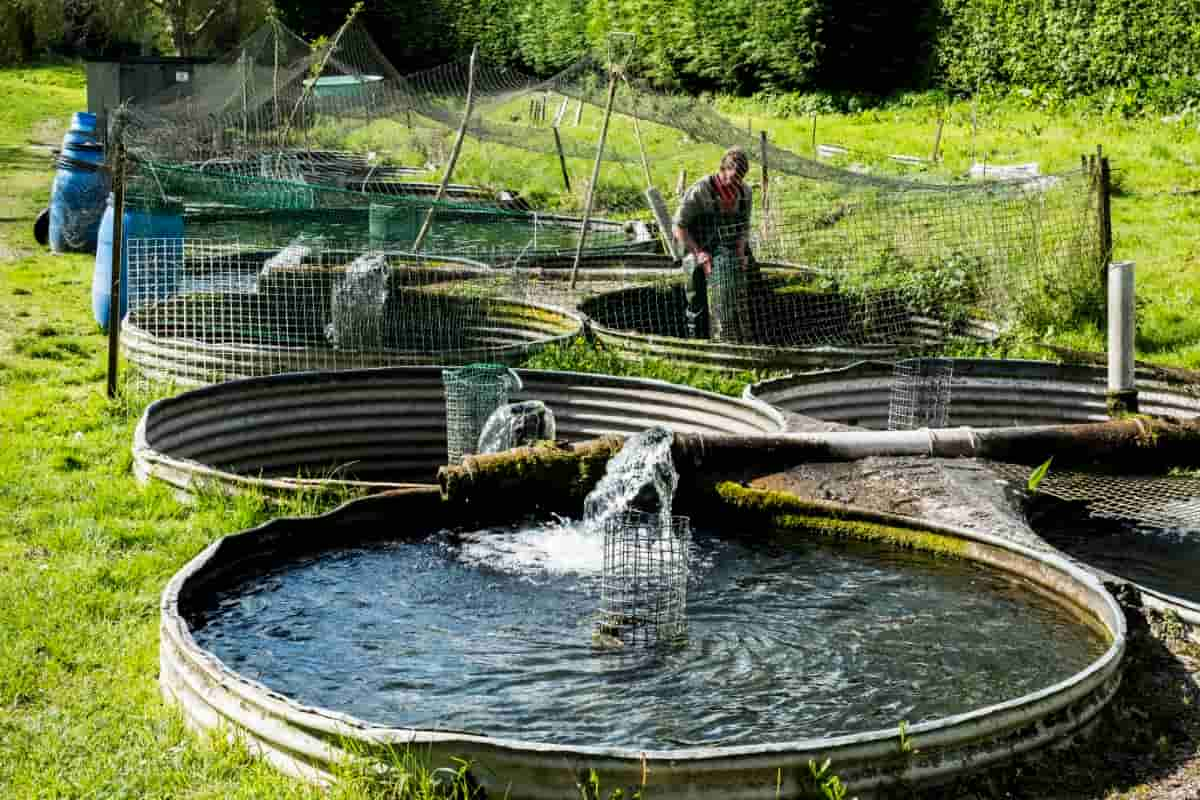
Create attractive packaging that showcases your fish’s quality and highlights any unique selling points. Comply with all regulations regarding labeling and food safety standards. Promote your products through social media, flyers, or collaborations with other businesses in the food industry. Offer discounts to attract customers and retain existing ones.
Be Eco-friendly
By applying eco-friendly practices, you not only contribute to the health of the environment but also enhance the sustainability and profitability of your operation. Utilize renewable energy sources, minimize waste production, and implement responsible water management strategies to ensure a greener approach to aquaculture.
Being eco-friendly is not just a trend – it’s a responsibility we all share in safeguarding our planet for future generations. Fish farming provides economic opportunities for entrepreneurs and local communities. It creates jobs along the supply chain, from hatcheries to processing plants, boosting rural economies. Plus, it offers a steady income source once your farm is up and running successfully.
- How to Make Houseplants Bushy: Effective Tips and Ideas
- Innovative Strategies for Boosting Coconut Pollination and Yield
- Pollination Strategies for Maximum Pumpkin Yield
- The Complete Guide to Chicken Fattening: Strategies for Maximum Growth
- Natural Solutions for Tulip Problems: 100% Effective Remedies for Leaf and Bulb-Related Issues
- Revolutionizing Citrus Preservation: Towards a Healthier, Greener Future
- Natural Solutions for Peony Leaf and Flower Problems: 100% Effective Remedies
- Maximizing Profits with Avocado Contract Farming in India: A Comprehensive Guide
- Natural Solutions for Hydrangea Problems: 100% Effective Remedies for Leaf and Flowers
- The Ultimate Guide to Choosing the Perfect Foliage Friend: Bringing Life Indoors
- From Sunlight to Sustainability: 15 Ways to Use Solar Technology in Agriculture
- The Ultimate Guide to Dong Tao Chicken: Exploring from History to Raising
- The Eco-Friendly Makeover: How to Convert Your Unused Swimming Pool into a Fish Pond
- Mastering the Art of Delaware Chicken Farming: Essentials for Healthy Backyard Flocks
- 20 Best Homemade Fertilizers for Money Plant: DIY Recipes and Application Methods
- How to Craft a Comprehensive Free-Range Chicken Farming Business Plan
- Brighten Your Flock: Raising Easter Egger Chickens for Beauty and Bounty
- How to Optimize Your Poultry Egg Farm Business Plan with These Strategies
- Subsidy for Spirulina Cultivation: How Indian Government Schemes Encouraging Spirulina Farmers
- Ultimate Guide to Raising Dominique Chickens: Breeding, Feeding, Egg-Production, and Care
- Mastering the Art of Raising Jersey Giant Chickens: Care, Feeding, and More
- Ultimate Guide to Raising Legbar Chickens: Breeding, Farming Practices, Diet, Egg-Production
- How to Raise Welsummer Chickens: A Comprehensive Guide for Beginners
- How to Protect Indoor Plants in Winter: A Comprehensive Guide
- Ultimate Guide to Grow Bag Gardening: Tips, Tricks, and Planting Ideas for Urban Gardeners
- Guide to Lotus Cultivation: How to Propagate, Plant, Grow, Care, Cost, and Profit
- Agriculture Drone Subsidy Scheme: Government Kisan Subsidy, License, and How to Apply Online
- Ultimate Guide to Raising Araucana Chickens: Breed Profile, Farming Economics, Diet, and Care
- Bringing Hydroponics to Classroom: Importance, Benefits of Learning for School Students
- Ultimate Guide to Raising Polish Chickens: Breed Profile, Farming Economics, Diet, and Care
- Ultimate Guide to Raising Australorp Chickens: Profile, Farming Economics, Egg Production, Diet, and Care
- Silkie Chicken Farming: Raising Practices, Varieties, Egg Production, Diet, and Care
- Sussex Chicken Farming: Raising Practices, Varieties, Egg Production, Diet and Care
- Homemade Feed Formulations for Livestock: Discover Cost-effective Starter to Finisher Feed Recipes
- 20 Best Pig Weight Gain Supplements: Top Swine Weight Gain Formulas
- Ultimate Guide to Elderberry Farming: Propagation, Planting, Yield, Cost, and Profit
How much are in square feet required to grow 20,000 fishes.
Area of the pond or tank depends on Type of fish (variety), number fish and fish size that you want to sell it off. Read the following articles, then you can under stand about your requirement.
For Fish Farming for Beginners: Read here.
For Rohu Fish Farming: Read here.
Hi, We don’t any personal support -Thank you.
For marketing Fish: 1) You can contact any Non-veg hotels 2) Any middle agent who can buy your fish and sell them in local market 3 ) You can yourself market locally. We don’t have ny idea of fish agents.
For Murrel Farming: Read here.
For Tilapia Fish Farming : Read here.
Hi….sir i want a help from you what i am confusing .ok i am from Assam state and i am going to make a FISH FARMING so i want to know that should i take a licence for making a fish farming?? how its legel or iligel just i need help from you.i hope you will help me.please sir.
Catfish farming is banned in India. However, If you are planning for commercial fish farming..you have to get trade license. Please contact local or state fisheries/aquaculture department for actual process and for different type of fish breeds.
Dear Sir how can we check the PH value, is there any preferred meter or something which we can do or we need to contact someone to check the same.If yes than where i can do.I am from Hyderabad, Telangana
You can get pH meters to check water purity and pH value. You many get them for 1,500 meters.
I need details about salt water fish farming. Is it possible to set in pond other than sea side?
Also need to know about fresh water fish lists.
we will update soon.
Can you suggest the power of aearator for my 30000 gallons pond.
Hello there , where are lobster larvae available in Maharashtra . Can you provide some information about the lobster and crab farming would be really helpful .
You should contact fisheries department of Maharashtra for seed. Here is some information about: Mud Crab Farming.
Hello, please refer me fish farming registration process.
You should contact State department of fisheries for your state trade license and other information.
Dear Team,
Many thanks for the great information above.
I am planning to start fish farming at home. This is purely for Home use only and not as a business. As I am an expat and my parents and kids are back home, i Really want to make sure that they get the best with minimal poisonous food. We have already started vegetables and we have been cultivating rice for decades..
My query is as below.
In order to get good yield of fish say at least twice a week what size should be my pond.
What are the best varieties that i can start with. Provided I am from the northern part of Kerala and a hilly region.
Is there any consultants or parties who deal with the same.
Are there any social community groups where i can join and learn more.
I Intend to start the same by end of August 2018.
Many thanks in advance.
Hi, now I start making a fish pond it’s size is 15 feet width and 20 feet length. Is it capable for any fish varieties in one pond? It have 4.5 feet depth .
Well, you can not mix many varieties. The best breed for your pond is Tilapia Fish, or Rohu or Catla.
Hi,i am from Sangrur dist of Punjab and I want to start this fish farming business and where can I meet the concerned person for this for more knowledge and is there any subsidy available and how much land is required?
Well, For fish farming, It’s upto you how much land you want to utilize for commercial fish farming. You can look for Aquaculture Consultant locally for more Information. However, here is some information about:
Fish Farming Business Plan and Fish Pond Design and Construction.
Hi,
I want to start fish farming with RAS. I want more details about RAS fish farming . Can please help me.
We will be Updating RAS fish farming soon. Stay tuned!.
From where i will get fish breeds
Well, You should contact Aquaculture department for fish fingerlings.
Can you do fish breeding at home without pond but using tanks? If we want to breed ornamental fish for aquarium ..is it a good option ? where can i find more information about the steps and market potential ?
I want to start a new fish farm….. want some consultancy….
Hi
My plan is to start the Salmon fish farming in 10 Acres. I have two varieties of Water available near to my ponds. Salt and Normal water.
Please guide me in my plan and where can I find the salmon fish seeds.
Greatly Appreciated for your support.
Hi sir, i have one acre of land in pandavapura, it is attached to lake and always water is coming from the channel. The soil type is clay, it is suitable for fish farming. On one acre (40,000 Sft) how many ponds can be built and what is the quantity of fish is to be cultivated in one acre of pond system.
You can happily cultivate fishes like Murrel, Tilapia, Catla and Tohu etc.. Clay type is good for Murrels. However, make sure too much of pH of soil is not good for fish farming.
Read: Fish Pond Design.
Read: Fish Farming FAQ.
Hi.
We are planning to start for the business for fish farming.
Please give us more ideas on how to start and what are the needed things we do?
Kindly give us your contact numbers.
First and Foremost, check which fish has more demand in your area. Personally, I like to set up a Tilapia Fish Farming.
Hi,
Thanks first of all. Great information here. I need your suggestions on setting up Fish Farming in 3 acres of area in Muradabad (UP).
Please guide me though the process. I could see like this
1. Set up a Farm of best in demand breeds.
2. Find the right buyer
3. Transport.
Also, what should be the size of initial investment.
Thanks
My personal opinion is to go for Tilapia Fish Farming as this breed is picking up. The investment all depends on the area of the cultivation, type of breed other feed.
Read: Tilapia Fish Farming.
Sir you suggested Tilapia than Rohu or Catla. But when comparing market price, Rohu or Catla priced around Rs.120 where as Tilapia around Rs.70. Even 60% production of Tilapia gets in Rohu,it is advantage as Rohu has good demand. please explain why do youthe suggest Tilapia.
Where do you get Tilapia for Rs.70? Tilapia is expensive in India. I am not sure whether you are confused with some other breed. Rohu an Katla are priced at 120 to 160 rs/kg based on area ..if they are live, they cost little more.
Hi, please specify the optimum pH for fish growing , ideal pH of the pond water and pond soil. Please reply urgently.
Usually, the acceptable pH range for fish culture is pH 6.5-9.0.
Read: Fish Farming FAQs.
Fish seed are available all months? Can i get fish seeds in summer?
Can I start fish farming in my well
Yes, it acts as Pond or Tank.
Hello sir,
I am planning to setup a 2000 sq. ft fish pond next year with four feet depth. Is this type pond suitable for Tiger prawns?
Thank you very much in advance.
Yes, 4 to 5 feet is good enough.
We wish to start Biofloc Fish Farming.In Maharashtra is any agency or consultant available? set up cost ?
Seeds Availibility?
Read this: Biofloc Aquaculture Technology.
I am from Mumbai where from it can get small fishes for breading I want to put in a big lake pls help n forward address or contact number
How do I download the material for my own referal study?
No, we don’t allow to download.
What is approx budget required to start fish farming?
It depends on the area of the pond.
I am based out of Delhi and interested in fish farming
Need proper training,guidance if someone can help andd share contact details
Regards
Can any person give me contact about any fish farm in India?
Hello Sir,
I have 2 new ponds 60×60 ft in jharkhand and i want to start farming of carps because in our area very high demand of carp fishes therefore, my humble request to you to explain the complete procedure from begining thanks.
hi i am looking for practical training on the fish farming so please can you suggest me any training center
I love fish farming
Hi Jagdish Reddy,
It’s very inspiring how you have devoted yourself into this. Are we allowed to visit your Fish farm? Please provide more details so I can further connect with you on the subject.
Thank you.
Can you give me the details of prowns farming.